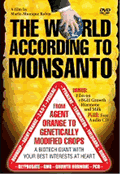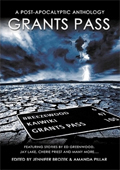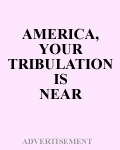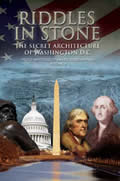TRASHING AMERICA: KILLING ANIMALS
PART 4 of 5
By Frosty
Wooldridge
December 8, 2011
NewsWithViews.com
Part 4: killing animals and costs of American littering
Sobered or perhaps “anguished” would be the look on my face as I research the sources for this series on “Trashing America.” More Americans throw more non-biodegradable trash onto the landscape in one week than was thrown in 100 years of the 18th century.
“Over 51 billion pieces of litter land on U.S. roadways each year,” said a spokesperson for Keep America Beautiful. “Most of it, 46.6 billion pieces, is less than four inches, according to KAB’s 2009 National Visible Litter Survey and Litter Cost Study. That’s 6,729 items per mile of highway.
While visible roadside litter has decreased by about 61% since 1969, litter is still a persistent problem. Consider these facts:
• Litter cleanup costs the U.S. almost $11.5 billion each year, with businesses paying $9.1 billion. Governments, schools, and other organizations pick up the remainder.
• Community economy and quality of life suffer. The presence of litter in a community takes a toll on quality of life, property values, and housing prices. KAB’s 2009 National Visible Litter Survey and Litter Cost Study found that litter in a community decreases property values 7%.
• Litter has environmental consequences. Wind and weather, traffic, and animals move litter into gutters, lawns and landscaped areas, alleyways, and parking structures. Debris may be carried by storm drains into local waterways, with potential for serious environmental contamination.
Who litters and why?
“Along roadways, motorists (52%) and pedestrians (23%) are the biggest contributors to litter,” said the spokesperson for Keep America Beautiful. “Research also shows that individuals under 30 are more likely to litter than those who are older. In fact, age, and not gender, is a significant predictor of littering behavior.
Why do people litter?
• Personal choice. Individual behavior—or choosing to litter—means litter on the ground. Nearly one in five, or 17% of all disposals observed in public spaces were littering, while 83% disposed of litter properly. And 81% of littering was intentional, e.g., flicking, flinging, or dropping.
Litter begets litter. Individuals are much more likely to litter into a littered environment. And once there, it attracts more litter. By contrast, a clean community discourages littering and improves overall community quality of life. Availability and proximity to trash and recycling receptacles also impact whether someone chooses to litter.
It’s “not my responsibility.” Some people feel no sense of ownership for parks, walkways, beaches, and other public spaces. They believe someone else will pick up after them; that it’s not their responsibility.
Where do People Litter and What Is Littered?
Keep America Beautiful’s 2009 National Visible Litter Survey and Litter Cost Study identified individual behavior as the primary contributor to litter in all locations.
Roadway Litter - Tobacco products, mostly cigarette butts, are the most littered item on U.S. roadways (38%). This is followed by paper (22%) and plastic (19%).
Non-Roadway Litter – Off the roads and highways, litter originates from many sources, but litter primarily collects at “transition points.”
Transition points are entrances to businesses, transportation, and other places where items must be discarded before entering. Confection (candy, chocolate, gum, etc.) ranks at the top (53.7%) of what is littered at transition points; this is followed by cigarette butts at 29.8%.
Experts estimate that 1.0 million marine animals die annually from our littered oceans. There are no estimates for the number of animals that die from litter across the North American landscape.
Humans litter the landscape, water and air—but animals pay the ultimate price. You may have seen otters, whales, dolphins and turtles that suffered death from strangulation via nylon nets, plastic beer can holders and fish lines. Humans toss fast food trash into the grass along every highway not realizing that animals will use it for nests, eat it for food and suffer death from the results.
To mark this year's World Animal Day, Wiltshire Wildlife Trust highlighted the dangers litter poses to our wild animals.
John Sutton, the Trust's Senior Waste Minimization Officer said "There are many ways in which animals and wildlife can be harmed by litter. Animals can be cut by sharp objects like cans or broken glass, strangled by plastic can holders or fishing lines, suffocated inside plastic bags, choked or poisoned on ingested plastics or cigarette butts, or trapped inside containers like cans and bottles."
Solutions:
How can Americans stop the container litter that stretches from sea to shining sea? How can we stop adding to the Great Pacific Garbage Patch? How can we stop people from littering 51 billion pieces a year in the USA alone?
1. We must work at the local, state and national level to force a federal 10 cent deposit/return law for all 50 states. Michigan has led the way and it works brilliantly.
2. We need intensive environmental educational classes as a pre-requisite to high school graduation. We could supplement with video ads run on TV.
3. You must get involved. I hear complaints, “Well, they won’t do anything.” That means “you” become “they” and then “you” get things moving. We cannot count on lawmakers to do what’s right because of the Peter Coors Factor.
4. Someone with money needs to start a national website that will promote a national 10 cent deposit-return law for all Americans. If I owned Bill Gates’ bank account, I’d create a national campaign to make it happen. It’s just common sense for heaven sakes!
5. That would get the ball rolling and move our civilization toward a cleaner, brighter and more ecologically responsible future.
| Subscribe to the NewsWithViews Daily News Alerts! |
6. Additionally, it would “Keep the Scene Clean” like my signs on I-70 on exit 254 in Colorado.
If we don’t address the core of the container litter problem, we will never solve it by picking up the endless trash. Why? Because millions of people will keep tossing their containers! But with a 10 cent deposit incentive, an armada of kids will be out picking up that litter faster than a chicken on a bug. Otherwise, we will continue to do damage to the biosphere as to litter, resource waste and environmental degradation on multiple levels.
Listen to Frosty Wooldridge on Wednesdays as he interviews top national leaders on his radio show "Connecting the Dots" at www.themicroeffect.com at 6:00 PM Mountain Time. Adjust tuning in to your time zone.
� 2011 Frosty Wooldridge - All Rights Reserved













 Share
This Article
Share
This Article







